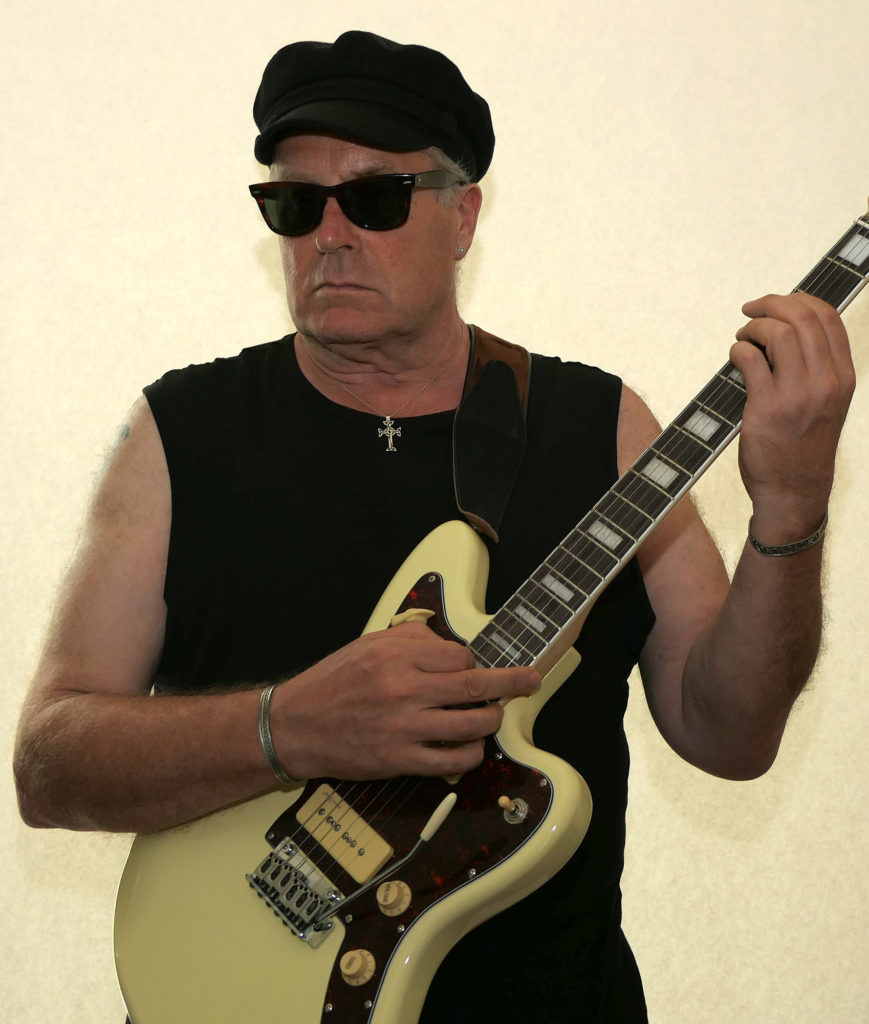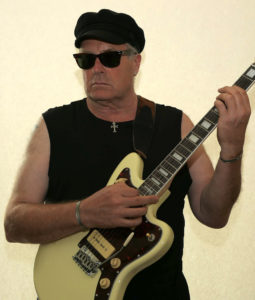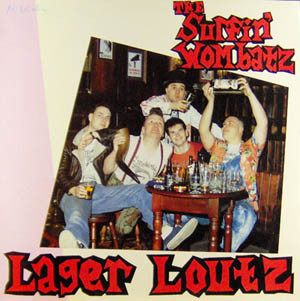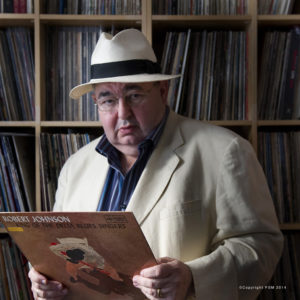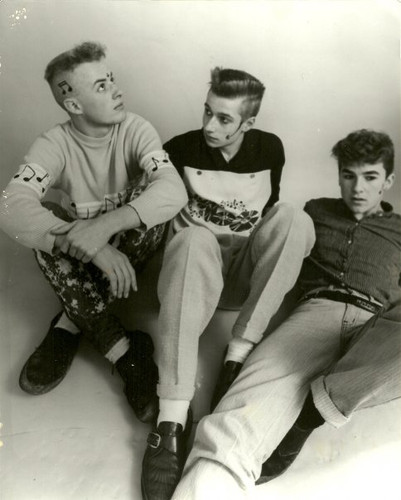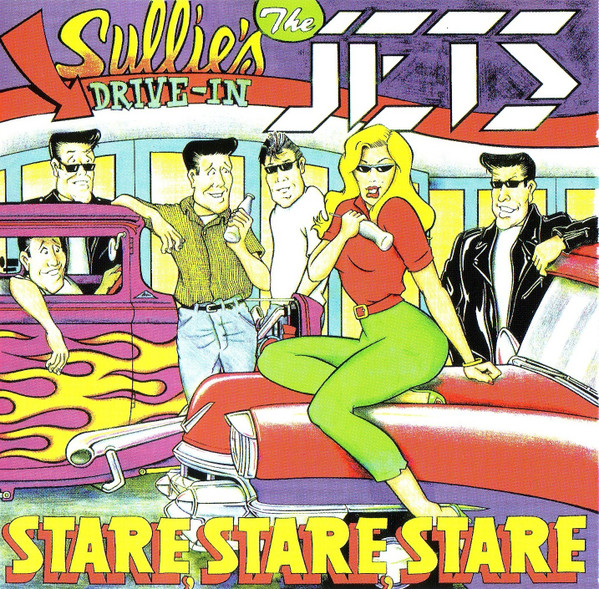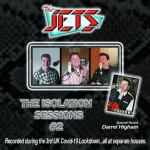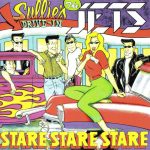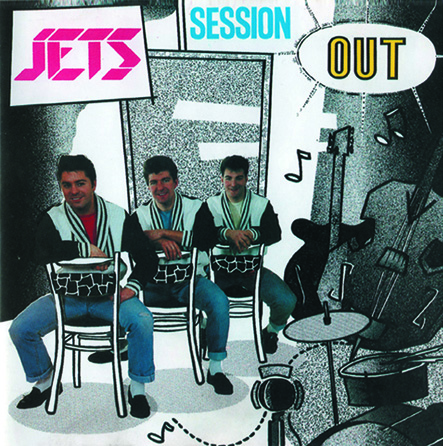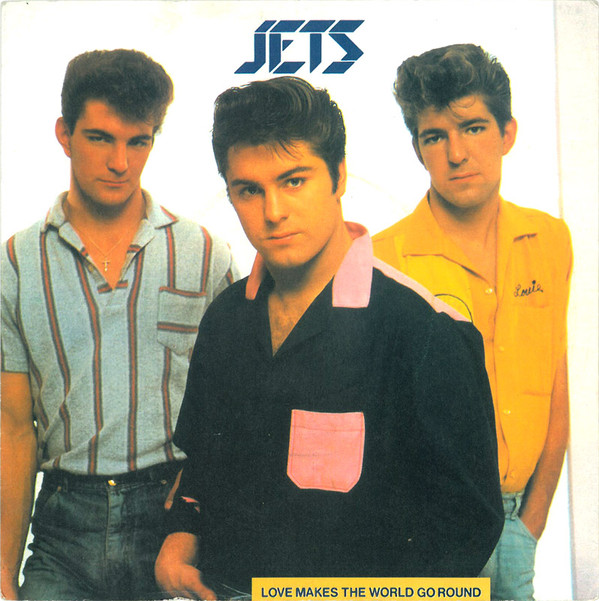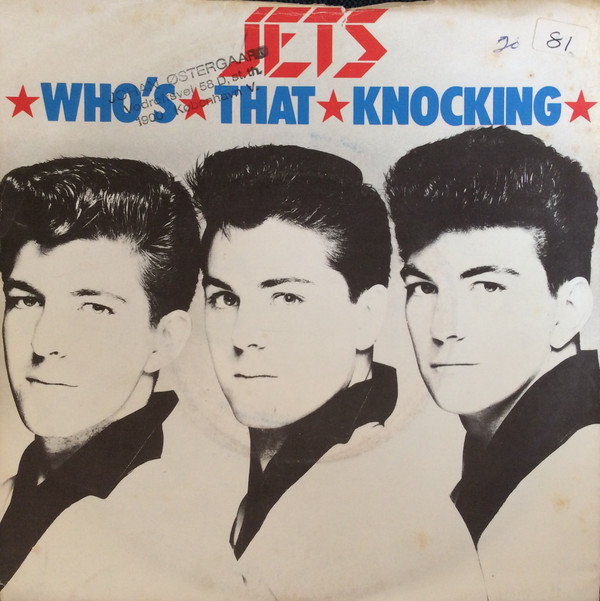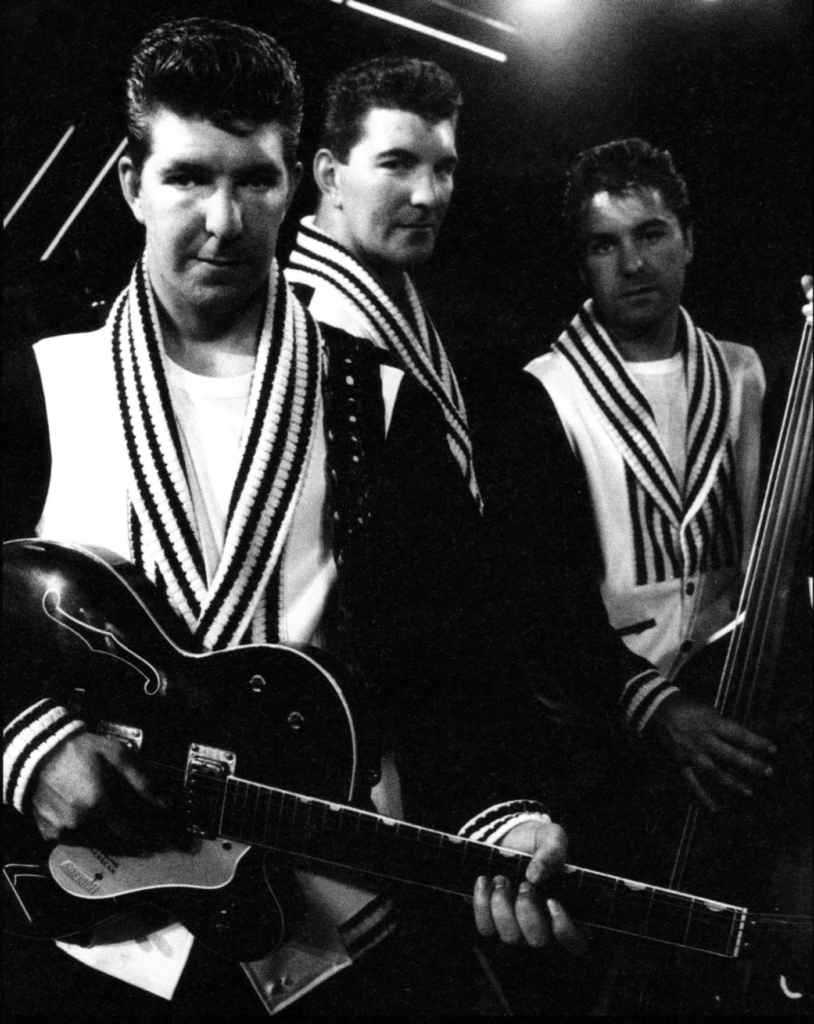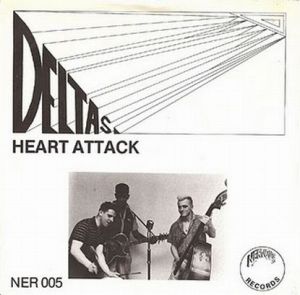Kev Saunders is known to fans for having been the guitarist of Frenzy that he joined in March 1984, replacing Simon Brand. He stayed with the band until December 1987, appearing on four albums (Hall Of Mirrors, Clockwork Toy, Sally’s Pink Bedroom and Live At The 100 Club). His guitar playing, rich in numerous influences, and composing abilities perfectly completed the Whitehouse / Peppler team. This trio, then the one formed with Adam Seviour when the group turned professional, wrote classic after classic, showing no boundaries in their inspiration, and influenced numerous groups after them.
Today, Kev Saunders no longer performs on stage, but fortunately for us, he continues to write and record music under the name Curt Davis.
Please tell us a little about your musical background. What records did you grow up with, and when did you decide to play guitar?
I grew up in the 1960s, during the time of Beatlemania, The Rolling Stones, The Pretty Things, etc.
There was always music playing in the house I lived in, and I had an uncle who was very into the music of that period. Bob Dylan, John Mayall, Pentangle, Electric Flag, Sandy Bull, Hendrix, those are just a few of the artists whose records he passed on to me.
He also played guitar, and a few years later, he showed me some basic chords. Around 1972, when I was 14, I got my first guitar and was well on the way to becoming very passionate about music.
I saw David Bowie on Top of the Pops performing Starman, Roxy Music, T. Rex, and Mott the Hoople were also having hit records. My Schoolwork was beginning to take a backseat, and by 1974, I had left full-time education and started rehearsing with other local musicians in a nearby church hall. We played songs by The Beatles, The Shadows, Chuck Berry, etc., and I was on the rhythm guitar. That band didn’t last long, but it was a start for me, and I began to develop my playing style, which is rooted in rhythm and blues.
What kind of bands did you play with before joining Frenzy?
From 1974 until 1984, when I joined Frenzy, I played in a number of bands and also began songwriting and doing solo material. In the mid-to-late 1970s, I was playing in club bands doing cover versions of popular songs. There was always a fair amount of Rhythm and Blues played, and that style became predominant.
In 1977, Punk Rock exploded and changed the music scene completely. I started recording demo tapes around 1978. In 1980, I was writing my own songs and started hawking the tapes around London publishers, but I didn’t get signed, although I did come close, only to find that due to an internal company shake up, my contact in that department was relieved of his position.
In 1981, I was the lead guitarist with The Chain Gang, a local Rhythm and Blues outfit. I spent some time in the city of Bath and played in a band called South of no North around 1982/83. In April 1984, I joined Frenzy.
Were you familiar with the Rockabilly/Psychobilly scene?
Yes, of the newer bands of the time, I had seen early 80s gigs by The Polecats and Stray Cats and had also seen The Cramps supporting The Police back in 1979. There was an emerging Neo-Rockabilly/Psychobilly scene, and the Link Wray/Robert Gordon musical partnership was also happening then.
As far as live gigs go, I was watching bands such as The Pirates, The Inmates, Nine Below Zero, Doctor Feelgood, etc. As I mentioned earlier, Rhythm and Blues was my thing as well as Punk/Ska…
How did you end up joining Frenzy?
I was in a photography studio in Frome, Somerset, the town where I was living at the time, and Steve Whitehouse came in to pick up some promo photos. He told me that Simon Brand had left Frenzy and asked me if I would be interested in joining. I had known Steve for a year or two and had once jammed with him and Alan Wilson when they were both in The Sharks.
We started rehearsing, and I did my first gig with them in Holland in June. We opened the show, which also featured Restless and Dave Phillips (who had a minor hit with a version of Tainted Love). Recording sessions for Hall of Mirrors were also underway around this time.
When you joined the group, were you initially supposed to model your playing in line with that of Simon Brand, or were you free from the start to innovate according to your style…
I changed my style in so much as I was mainly using transistor amps with Frenzy, rather than the Hiwatt 50-watt valve combo that I had been using since 1976. I just cleaned up my sound, and also used slapback echo. Basically, I was still playing the Chuck Berry-style licks, just a little bit faster…
Tell us about the work dynamic within Frenzy. The songs are almost all credited with your three names. How did you work together to write and arrange them?
Although the credits were often three ways, most of the material was chiefly written by one member with later additions by the others. Someone would write lyrics to a tune or chord pattern another member had created. It was diplomatic to credit all 3 of us.
Merv Pepler, the drummer, could also play guitar and keyboards, as well as sing backing vocals. He also sang lead on In My Prison and played some guitar on it. Both myself and Merv came from a more diverse musical background. Steve was the frontman/bass player and his background was more Rockabilly.
Our songwriting methods made Frenzy more unique and very different from other bands on the scene.
When I listen to your guitar sound and the way you play these albums, I can hear much more than the usual Rock’n’Roll influences. I can feel that you wanted to explore other territories, and above all, you didn’t set limits for yourself…
I can play in a variety of styles: Funk, Pop, Blues, Rock, Reggae, Rockabilly, Folk, Country etc.
That all comes from my time in the club bands back in the 1970s when you needed to be adaptable to get the work. Being flexible is important when you are a professional musician. Meeting Roy Williams and joining Frenzy gave me a break in the music industry. I spent 10 years from the ages of 16 to 26 working towards making music my profession and getting a recording contract.
I have the impression that Frenzy, although being a formidable live band, wanted to demonstrate that an album could be more than capturing three guys live in the studio…,
Frenzy was always developing right from the word Go. We came onto the Rockabilly/Psycho scene, but it was clear to everybody that we were going to evolve rapidly. Scenes and movements have their limitations; they are useful as a stepping stone, but they can backfire on you when the musical climate changes… During my time in the band, we recorded four albums. They are all different, but they show the musical prowess of a band that is still highly regarded.
As we progressed, the recording budgets got bigger, and we continued developing our various styles.
We were also able to faithfully reproduce a lot of our material live, in fact we usually road tested songs before we commited them to vinyl….

Let’s talk about Sally’s Pink Bedroom. I really think this album needs to be rediscovered, like Restless’ After Midnight. If we consider that Psychobilly was born as a reaction to a Rockabilly/Teddy Boy scene that was too narrow-minded, didn’t you find the reception given to this album unfair and that it deserved better?
Ok, for starters, Sally’s Pink Bedroom is not a Psychobilly album. Although it was the fourth album Frenzy released, it was much more diverse than the previous three. We were looking to move to another record label and approached I.D. Records about making an album of cover versions as we didn’t want to use up any more original material to honour the existing contract. It was decided to make an album of half covers/originals; it was, in fact, a compromise between the label and the band.
It’s the last record I made as Frenzy guitarist, I hear that it now has some kind of cult status as it didn’t sell very well and I believe the record company deleted it a few months after its release.
Maybe it’s time for a re-appraisal, as I do think it was judged rather unfairly at the time.
Didn’t the group ultimately find itself pigeonholed by the Psychobilly label?
Yes, but if you look at the top bands on the scene back in the Klub Foot days such as Frenzy/Meteors/Demented are Go/Guana Batz/Stingrays/Batmobile, they are all musically different, but they drew the same kind of audiences. Psycho/Rocking/Garage…It’s all Beat Music.
The British music press ignored the scene, even though over 800 people turned up on a Saturday night to watch these bands at the Klub Foot. In 1986, we were in the top 5 of the independent charts with I See Red, but the journalists/reviewers rarely showed up.
To be honest, Germany, Holland, and Finland were the places where this kind of music was more appreciated. We once played an outdoor festival in Finland, when we supported Katrina and the Waves, the audience total was around 20 thousand people.
You played with two different drummers in Frenzy, Merv and Adam. What was unique about each person, and did their different styles influence your playing?
As I mentioned earlier, Merv was a multi instrumentalist, and Adam who joined in 1986 was a drummer/percussionist. They were both competent and very powerful behind the drums. Merv also used an electronic drum, I believe it was known as a Synare. They were both nice guys, and they knew one another from other local bands.
When we went professional in 1986, Merv was still doing an engineering apprenticeship and was unable to commit to 6 week tours of Europe. That’s why he was replaced by Adam. Merv later went on to join the Ozric Tentacles,and he currently performs under the name of Eat Static.
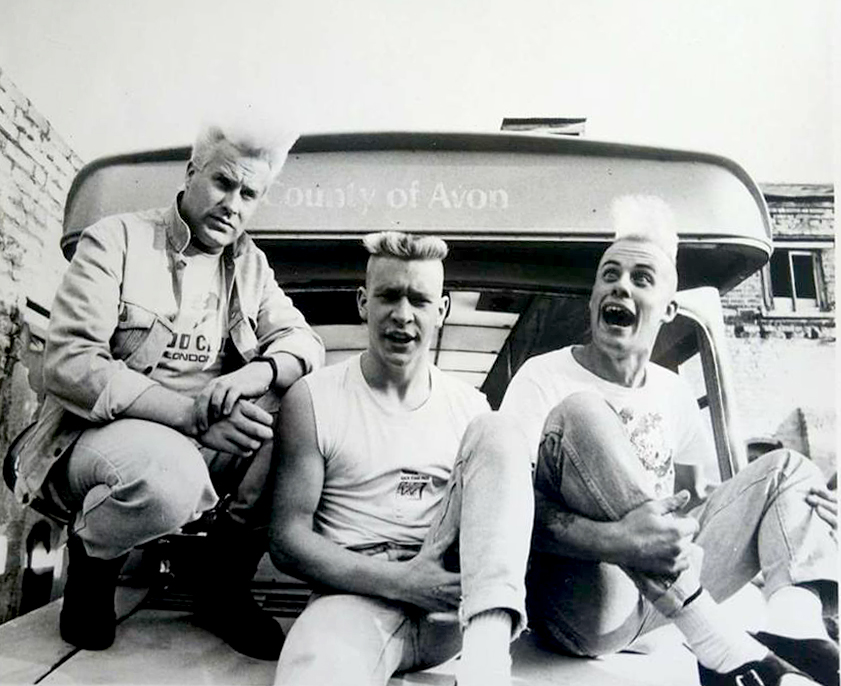
Likewise, you have worked with three different producers: Paul ‘Doc’ Stewart, Pete Gage, and Pat Collier. How was it to work with each of them? Did they have different approaches, and at what levels did they intervene?
As we progressed through the four albums, the budgets increased and we were able to spend longer making the records. All of those producers gave input and advice on different levels.We always worked closely with them, and always attended the mixing sessions.
The first two albums were made at various sessions at Mushroom in Bristol, Madhouse in Luton, and Village Way in London. Sally’s Pink Bedroom was recorded over a 2 week period at Greenhouse studio’s in London, and we started to use electric bass and 12 string guitars…
Can you tell us about the atmosphere at the Klub Foot? How was it to play there?
Klub Foot was the big London gig, with around 800/1000 people most Saturday nights. We played there several times and were recorded for compilation albums. As I mentioned earlier the music press hardly ever turned up to review any of the gigs there, nor did they pay much attention with regards to reviewing the various singles/albums which were released around that time by the bands who were regulars at that venue, even though several bands including us, had releases in high positions in the independent charts.
You could buy records in the foyer, and the bands were always happy to sign autographs and have a drink or two with people who had come along to see them. It was a classic/iconic venue for the rocking scene.
Steve eventually split the band to reform it six months later. But you chose not to be part of this new venture. Were you no longer interested in playing with Frenzy again?
There were several reasons why I decided not to rejoin. We had worked very hard over the previous four years; we were continually touring/recording/writing new material, and it began to feel like a treadmill. I had achieved all the things that I had set out to do as a professional musician. The only way we could make a decent living was by continually touring around Europe. I think there is a shelf life on all projects as regards the enthusiasm you have for them and the kind of returns that you expect in a given time. I went into the education system and also privately as a full-time guitar teacher.
Frenzy continues to perform on stage. How does it feel to see that songs you wrote and recorded 40 years ago (I See Red, Hall Of Mirrors, Misdemeanour, Clockwork Toy) are still highly popular?
It’s good that those songs are still being played. They have stood the test of time. Psychobilly now seems to appeal to a wider audience…
Are you still in touch with Steve?
I haven’t been in contact with Steve for several years now. Back around 2007, he phoned me and asked if I was interested in re joining Frenzy, but due to ill health I have retired from live gigs/touring, so I turned down his offer.
As you can see I still do interviews about my time in the band, as it was a great but brief period in my life..
Tell us about your subsequent musical projects, including Curt Davis. To my knowledge, you have only released one EP with four tracks. Do you plan to release more titles in the near future?
The Curt Davis recordings I made for Nervous Records were not intended to be an EP, Although the fact that there are 4 tracks may lead people to think that it was. Roy Williams asked me to record some instrumental tracks for use in films, television, advertisements, etc. There was a specific direction given as to what he required, such as the use of old valve/vintage gear, mono mixes, and tracks under 3 minutes, etc. I contacted my friend John Pickford to assist/co-produce on these sessions as I knew he was very experienced in this type of recording.
We had to work quickly to complete the project, as, during the second day in the studio, the lockdown was announced due to COVID-19. The Video for Page Parker was filmed a few months later in October 2020.
I have recently been talking with Doc Stewart about recording some material with him at his studio in Taunton. It will probably be as Curt Davis, the name I used for the recordings I made for Nervous in 2020. I am writing new material; this time, there will be vocals, a more hard-edged approach, and Psycho/Rockabilly with some Freakbeat touches and will be influenced by my interest in the music of Iggy Pop/Lou Reed…
I also create electronic music under the name of Spookboy. You can check it out on Bandcamp.
Thanks a lot to Kev Saunders for taking time to answer my questions.
